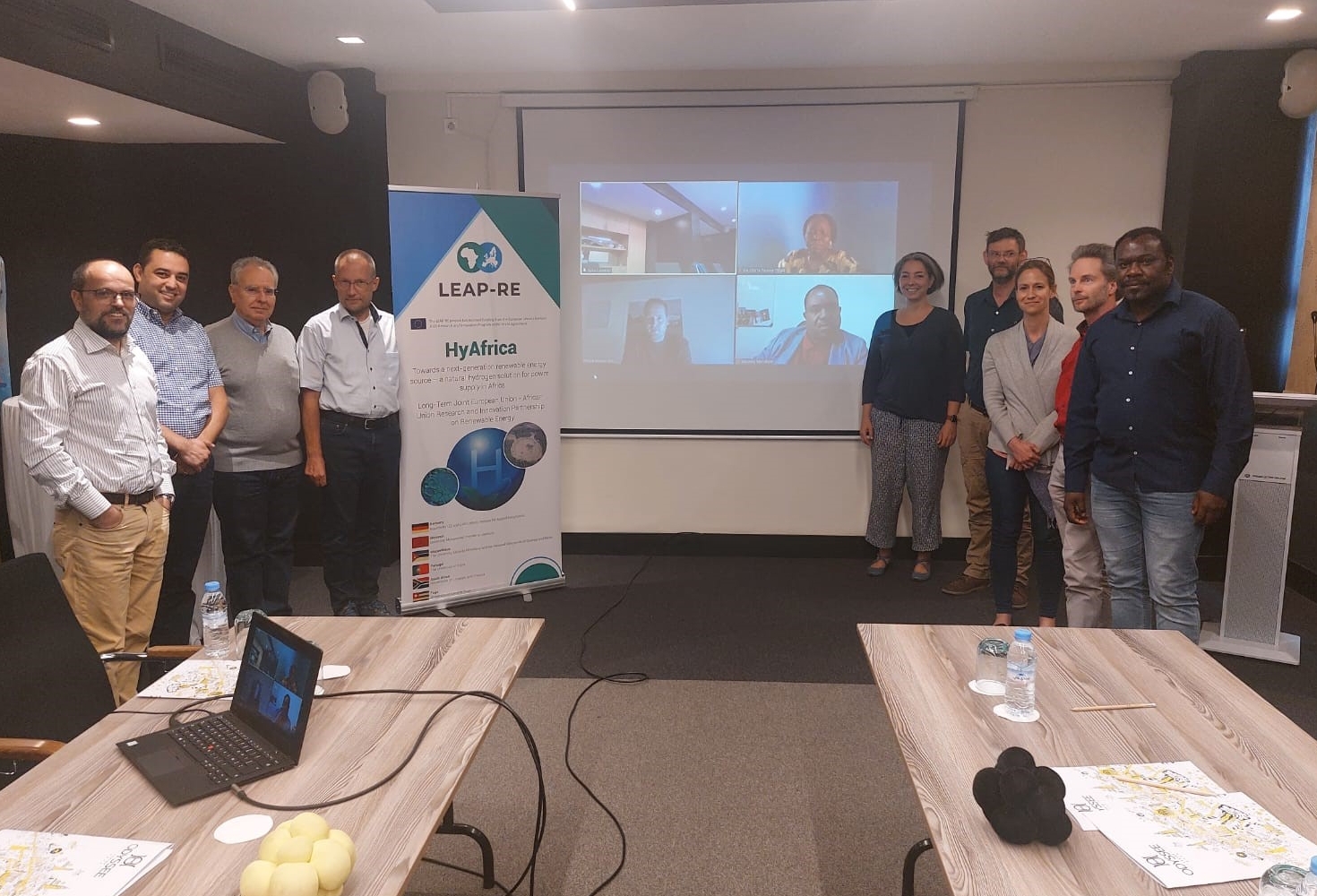HyAfrica investigates natural hydrogen in Africa as an
alternative energy source
The HyAfrica project is exploring deposits of natural hydrogen in several African countries to provide alternative energy for local areas. The long-term joint research and innovation partnership between the European Union and the African Union in the field of renewable energy (LEAP-RE) is funding the project with a budget of nearly one million euros. HyAfrica is the first international research project to explore the potential of natural hydrogen as a new energy source.
HyAfrica stands for "Towards a next-generation renewable energy source - a natural hydrogen solution for power supply in Africa". The project will explore the possibility of using hydrogen, which occurs in certain geological environments in Africa, to generate electricity in stand-alone and off-grid systems for rural and isolated communities.
The project consortium coordinated by the Portuguese SME Converge!, a spin-off of the University of Évora, consists of the Leibniz Institute for Applied Geophysics (LIAG), the Fraunhofer Institute for Energy Economics and Energy System Technology IEE, the University Mohammed Premier in Morocco, the University of Lomé in Togo, the Universities of Limpopo and Pretoria in South Africa, as well as the University Eduardo Mondlane and the National Directorate of Geology and Mining in Mozambique. The kick-off meeting of the partner organizations in Casablanca in mid-September now marked the beginning of the collaboration. The HyAfrica project is scheduled to run for three years.
White hydrogen as a regenerative energy source
Natural hydrogen - also called white hydrogen - is a primary and clean energy source that is continuously generated by geochemical reactions in geological formations. However, the methods for exploring and using natural hydrogen are insufficiently defined and there are few regulatory measures in the countries participating in the project.
HyAfrica aims to investigate the utilization potential of naturally occurring hydrogen in the local energy system of the respective regions in Morocco, Mozambique, South Africa and Togo and to assess the socio-economic impact on the local communities. The project aims to harness hydrogen gas found in geological formations and use it as a primary energy source. This continuously renewable resource has the potential to be a low-cost, climate-friendly supplement to hydrogen production without the inefficiencies and accompanying impacts on land use, water consumption, and feedstock supply associated with the industrial production of blue and green hydrogen.
Broad hydrogen expertise on potentials and technologies
In the "Geophysical Characterization" work package, the LIAG is concerned with the interpretation of geophysical data and specifically gravimetric and magnetic anomalies. "With our geophysical investigations, we want to better understand which geological conditions favor the occurrence of natural hydrogen deposits," explains Prof. Dr. Gerald Gabriel, LIAG project leader. The technical and capacity-building skills for the geophysical techniques are necessary for understanding and designing renewable H2 resources.
Fraunhofer IEE will contribute its expertise in the techno-economic areas, identification of business models and impact assessment of energy technologies. Hydrogen technologies and electrical energy storage are strategic business areas of the institute. In addition, Fraunhofer IEE has extensive experience in hydrogen planning and utilization at the European level and has already successfully conducted research on renewable energies in African countries.
The goal of the work package coordinated by Fraunhofer IEE is to explore two local energy systems to evaluate the potential of natural hydrogen in standalone and off-grid energy systems using selected business models in remote or small communities.
"Together with local teams and universities, we will investigate whether this naturally occurring hydrogen is potentially economically viable for the local population," says project manager Dr. Maike Buddensiek from Fraunhofer IEE. "What's special about this is that socio- and techno-economic aspects will be evaluated in equal measure." The socio-economic effects are being investigated under the assumption that the use of hydrogen in local energy systems will become established, also with regard to the business models under investigation. The necessary data will be collected and analyzed and for each region methodological approaches will be provided.
Scientific Contact
Dr. Maike Buddensiek
maike-liselotte.buddensiek@iee.fraunhofer.de
Prof. Dr. Gerald Gabriel
Gerald.Gabriel@leibniz-liag.de
About LEAP-RE
The LEAP-RE program was launched in 2020 to develop innovation in renewable energy and strengthen research cooperation between the European Union (EU) and the African Union (AU). It aims to increase the use of renewable energy through a balanced package of research, demonstration and technology transfer projects on both continents.
The HyAfrica project is funded by the German Federal Ministry of Education and Research and is part of the LEAP-RE program. LEAP-RE is funded by the European Union under the research and innovation program "Horizon 2020" under Grant Agreement 963530.
Mehr Informationen

Last modified:
